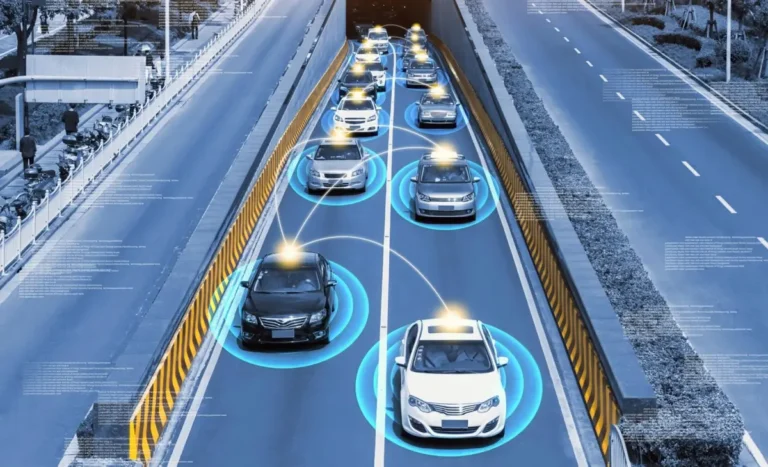The digital age has brought about a myriad of advancements, but with it comes the responsibility of ensuring data security and compliance. One of the most crucial standards in this realm is SSAE 18. This article delves deep into the intricacies of SSAE 18 and why it’s indispensable for your data center.
The world of data center compliance standards is both straightforward and intricate. For potential customers eyeing a colocation facility, it’s evident that compliance standards hold significance. However, the underlying details of each standard and its implications might be elusive.
Deciphering the Jargon: The terminology surrounding these standards can be perplexing. Words and phrases might have multiple interpretations, leading to confusion. But, comprehending these certifications is paramount for colocation customers. It’s not just about knowing if a facility is compliant, but understanding the essence of the question.
The Significance of SSAE 18: Among the myriad of data center compliance standards, SSAE 18 stands out prominently. Let’s delve deeper into what SSAE 18 entails.
The Essence of SSAE 18
SSAE, or Statement on Standards for Attestation Engagements, is overseen by the American Institute of Certified Public Accountants (AICPA). SSAE 18 governs how organizations present their compliance controls, typically through a Service Organization Control (SOC) report. This report is pivotal for evaluating risks associated with outsourced vendors.
Evolution of Standards: SSAE 18, introduced in 2017, replaced the SSAE 16 standards. It mandates more rigorous scrutiny on how companies assess and report on their third-party vendors. In essence, it demands companies to uniformly apply risk assessment standards to both direct and indirect vendors.
Subservice Organizations: SSAE 18 categorizes vendors subcontracted by service providers as “subservice organizations.” These entities must undergo risk assessment to evaluate their controls. This ensures that partnering with a service provider guarantees that their associated vendors adhere to the same compliance standards. The primary aim is to mitigate risks that might arise from subservice organizations lacking apt risk management policies.
SOC Reports
SOC reports, stemming from SSAE 18 standards, are pivotal in assessing data center certifications. These reports, introduced in 2011 to supersede SAS 70 certifications, are of three types, each addressing a distinct operational facet.
SOC 1: This report evaluates if a service organization has robust internal controls related to financial reporting to safeguard client data.
- Key Features:
- Focus on financial reporting.
- Ensures protection of client data.
SOC 2: This audit scrutinizes internal controls related to security, encompassing data availability, confidentiality, privacy, and processing integrity.
- Key Features:
- Emphasis on security measures.
- Assesses data availability and confidentiality.
SOC 3: This report, akin to SOC 2, vouches for the aptness of internal security controls but without delving into specifics. While SOC 1 and SOC 2 are for customers, SOC 3 targets the general public, ensuring transparency without revealing critical operational details.
- Key Features:
- General overview of security controls.
- Designed for public consumption.
Type 1 vs. Type 2 Reports
When it comes to SOC reports, understanding the distinction between Type 1 and Type 2 is crucial. Both types serve unique purposes and offer different insights into an organization’s risk management practices.
Type 1 Reports
A Type 1 report offers a snapshot of an organization’s controls at a specific point in time. It focuses on the design of these controls and whether they are aptly positioned to be effective.
The Design Focus: Unlike traditional audits that delve into operational effectiveness, Type 1 reports emphasize the design and implementation of controls. It’s about the policies in place rather than their practical outcomes.
The Temporal Aspect: The report captures the state of controls as of the report’s issuance date. It’s a glimpse into the organization’s risk management at that particular moment.
Type 2 Reports
Contrastingly, Type 2 reports delve deeper, assessing the effectiveness of controls over a more extended period, typically ranging from six months to a year.
Operational Effectiveness: While Type 1 evaluates control design, Type 2 gauges their practical effectiveness. It’s a testament to how these controls fare in real-world scenarios over time.
The Duration Factor: By spanning a more extended period, Type 2 reports offer a comprehensive view of the controls’ consistency and reliability.
The Imperative of SSAE 18 Compliance for Data Centers
In today’s digital age, data centers are the backbone of many businesses. Ensuring their compliance with SSAE 18 is not just a regulatory requirement but a testament to their commitment to data security.
Trust and Assurance
Organizations entrust data centers with invaluable data assets. Whether it’s colocating servers or building hybrid cloud deployments, they seek assurance that the facility upholds the best practices to safeguard data.
Reassurance through Reporting: SSAE 18 compliant SOC reports offer this much-needed assurance. An SOC 1 attestation, for instance, showcases a data center’s commitment to safeguarding financial data.
Security and Best Practices: SOC 2 reports, on the other hand, validate that a facility’s security measures align with industry best practices, ensuring data availability and minimizing breach risks.
Extending Compliance to Vendors
SSAE 18 doesn’t just stop at the organization. It ensures that the compliance standards extend to all associated subservice organizations.
Eliminating Weak Links: By ensuring that all connected entities adhere to the same high standards, SSAE 18 eliminates potential vulnerabilities that might arise from non-compliant vendors.
A Holistic Approach: SSAE 18 fosters a comprehensive approach to data security, ensuring that every link in the chain, from the primary organization to its vendors, is robust and secure.
1. What led to the transition from SSAE 16 to SSAE 18?
The transition was primarily to address and improve the clarity, length, and complexity of the standards, making them more user-friendly. Additionally, SSAE 18 places a stronger emphasis on risk assessment, especially concerning third-party vendors.
2. How often should a data center undergo SSAE 18 compliance checks?
While the frequency can vary based on the organization’s specific needs and the type of SOC report, it’s generally recommended that data centers undergo annual SSAE 18 compliance checks to ensure continuous adherence to standards.
3. Are there penalties for non-compliance?
While there aren’t direct penalties, non-compliance can lead to a loss of trust among clients and potential business partners. It can also expose the organization to increased risks and potential legal ramifications if data breaches occur due to non-compliance.
4. How does SSAE 18 differ from other compliance standards like ISO 27001?
While both standards focus on ensuring robust security practices, SSAE 18 is more centered on controls over financial reporting, whereas ISO 27001 is an international standard for information security management systems.
5. Can an organization claim SSAE 18 compliance without an official attestation?
No. Claiming compliance without official attestation can be misleading and unethical. Organizations must undergo a thorough audit by a certified public accountant to receive an official SOC report.
Final Words
In the rapidly evolving digital landscape, ensuring data security and compliance is paramount. SSAE 18 stands as a beacon of trust, ensuring that organizations not only uphold the highest standards of data integrity but also extend these standards to their associated vendors. As we move forward, understanding and adhering to SSAE 18 will be crucial for any organization that values data security and the trust of its stakeholders.








